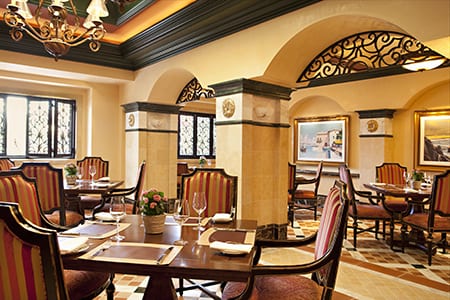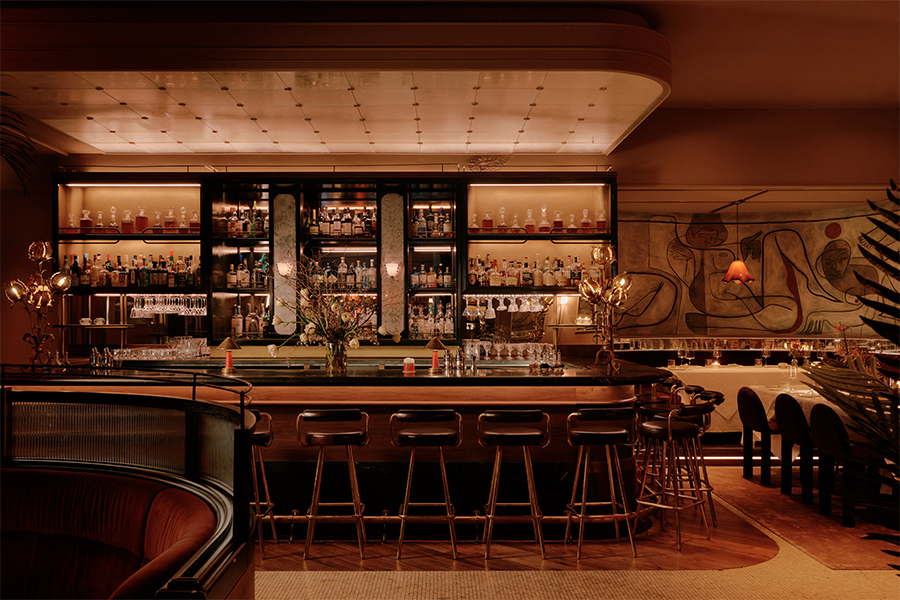“The space reminded me of a large, splendid public structure,” says Warren Sheets, who led the design of Amaya La Jolla restaurant, just outside of San Diego. Formerly an art gallery, the 10,000-square-foot sister restaurant to the Grand Del Mar’s Amaya mimics its sibling’s Italian flair.
“To complement the distinctive European style of the Grand Del Mar, I looked to large, decorative Italian palazzos for inspiration,” says Sheets, who hails from local firm Warren Sheets Design, Inc. Using a palazzo style prevalent in the 19th and 20th centuries, the architecture recalls palaces built by wealthy families during the Italian Renaissance. Hand-troweled plaster and mosaic tile floors replicate Venetian finishes, while detailed coffered ceilings and hand-painted frescoes give an aura of European splendor.

“The architects of these buildings sometimes drew their details from sources other than the Italian Renaissance, such as Italian Romanesque, the French Beaux Arts movement, and Empire and Venetian styles,” adds Sheets. As a result, the hand-carved arched lunettes above the outside windows and decorative ironwork at the entry doors exemplify the Beaux Arts movement.

Despite these historical influences, Amaya La Jolla’s main inspiration comes from its sister restaurant. “One of the most notable similar design elements found at both the Grand Del Mar and Amaya La Jolla is the abundant use of hand-carved stone and polished marble,” explains Sheets. Carved stone adorns the exterior in the form of arched pediments and in the entrance as welcoming columns. Stenciled accents, custom iron and crystal chandeliers, mosaic stone flooring, and hand-troweled Venetian plaster walls also carry across both designs.

The differences start at the location. “Since Amaya La Jolla is located in a seaside village, we added new coastal-inspired elements,” says Sheets. The doors of the wine room are paneled with oil paintings of St. Marks Square and Impressionist-style artwork⠯⠯all imported from Western Europe. “We selected the artwork for its airy, Impressionistic feel and vibrant colors, which tie into the restaurant’s coastal location,” comments Sheets.

This vibrant palette ranges from gold, ochre, and aubergine, contrasted against shades of rich cardamom rose and French plum. “We selected these colors to represent the beautiful sunsets of the Umbria region of southern Italy,” says Sheets. In the veranda, outdoor mosaic tiles and a lattice-inspired ceiling evoke a traditional European motif. “We wanted the veranda to have the feel of an outdoor patio in an Italian locale such as Florence,” says Sheets.

As for the dining room, “the materials are typical of the restaurants found in Italy’s many villages,” explains Sheets. Pear wood moldings, wrought iron chandeliers, and polished marble comprise the open space. For a more residential feel, the private dining room is outfitted in heavy millwork and intricate carpeting. “[We wanted] guests to feel as though they are in a home, versus a restaurant,” says Sheets. “It was a challenge to achieve a sense of intimacy in such a large space, but I think we succeeded.”


